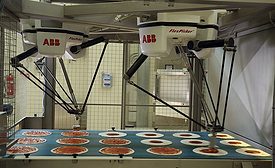Wayne Labs
Wayne Labs has more than 30 years of editorial experience in industrial automation. He served as senior technical editor for I&CS/Control Solutions magazine for 18 years where he covered software, control system hardware and sensors/transmitters. Labs ran his own consulting business and contributed feature articles to Electronic Design, Control, Control Design, Industrial Networking and Food Engineering magazines. Before joining Food Engineering, he served as a senior technical editor for Omega Engineering Inc. Labs also worked in wireless systems and served as a field engineer for GE’s Mobile Communications Division and as a systems engineer for Bucks County Emergency Services. In addition to writing technical feature articles, Wayne covers FE’s Engineering R&D section.
Senior Contributing Technical Editor
ARTICLES
Cybersecurity and OT
No doubt a ransomware or malware attack can shut down enterprise business systems, but cybersecurity attacks can do a lot more damage on manufacturing systems
Read More
Tech Update
How robots help processors navigate the COVID-19 pandemic
Whether team members are out sick with coronavirus or your plant needs some help with social distancing, robots can pick up the slack
August 21, 2020
Engineering R&D
New desiccant technology uses ceramic material
Loose beads are no longer required for compressed air systems
August 14, 2020
Manufacturing News
Two beverage giants choose cloud partners
Long-term cloud technology contracts pair PepsiCo with Microsoft and Keurig Dr Pepper with Google Cloud
August 11, 2020
Packaging and Supply Chains
Food processors cope with supply chains, pandemic and changing customer needs
PMMI’s Jorge Izquierdo, vice president of market development, sheds light on the state of industry trends including automation, OEE, omnichannel and blockchain
August 10, 2020
Tech Update: (Robotics) Part Two
Robotic vision systems and roles for cobotics
High-tech robotic vision sets the stage for advanced applications while cobotics finds new roles in food and beverage
August 3, 2020
Engineering R&D
Supply chain solution includes sensors, digital visibility platform, cloud access
Cloudleaf puts the supply chain pieces together to connect data silos
July 30, 2020
Elevate your expertise in food engineering with unparalleled insights and connections.
Get the latest industry updates tailored your way.
JOIN TODAY!Copyright ©2024. All Rights Reserved BNP Media.
Design, CMS, Hosting & Web Development :: ePublishing









